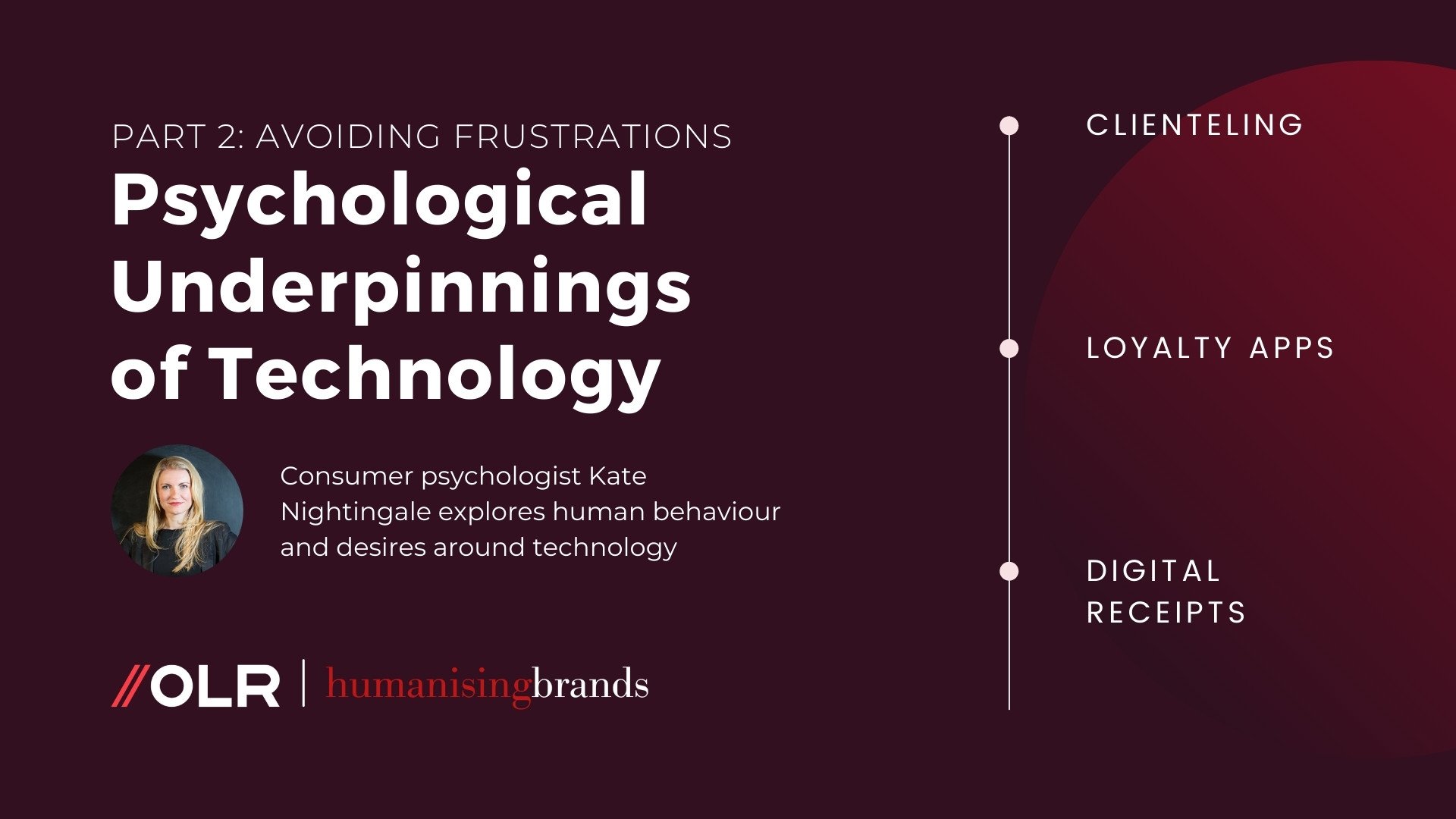Psychological Underpinnings of Technology: Avoiding Frustrations
by Kate Nightingale, Consumer Psychologist @ Humanising Brands
This is a series of 4 articles, in conversation with OLR where we are exploring the behavioural/psychological underpinning of various retail technologies and how these can be extremely valuable to your brand.
How to avoid in-store frustrations?
You decided you need a new pair of shoes as you have a couple of parties to attend. You browse some of your favourite retailer’s websites and maybe even check in with your friends or your most liked influencers to see what’s current. You found a few options and decided to visit the store. You try on some shoes but have your heart set on this one pair. Unfortunately, they don’t have the colour you like in your size. A sales associate suggests that you try it in another colour and they can then order it in your colour for next-day delivery.
This is a perfect example of how a brand can avoid an instance of meaningless friction with potentially very negative consequences to overall shopping satisfaction and detrimental effects on the customer’s relationship with your brand. All thanks to the Clienteling solution allowing you to see a single view of your eCommerce and store inventory. Not only that, a sales associate is privy to the customer’s account and their purchase history so they have the knowledge to suggest other items the customer might like and solve other issues at the same time.
“Intimacy has become a must-have for all brands. As people crave meaningful connections, they are expecting it in every interaction with a brand.”
Consumer trade-off for loyalty
'Data gives knowledge; knowledge is power.’ Data also fosters intimacy when used right. Through creating shopping accounts or joining brand loyalty programmes, customers share their data on their preferences. Together with their ‘Favourites’ selection, basket content and shopping history, they open up to the brand, thus sharing an increased level of intimacy with the brand either through a sales associate or an online channel and in exchange get a more personalised experience. All in all, Clienteling and Loyalty apps are great technology virtual locations examples where consumer trade-off happens. Trade-offs happen when customers will give up on one value in exchange for something they value higher at a given moment. It's about choosing something more valuable at the moment and giving up something less valuable. Personalised service and the desired pair of shoes are perceived as more valuable than privacy at this stage.
What could have further enhanced the meaningful friction element in this example is if a customer had your Loyalty app. They get a push notification that if they purchase today, not only they receive a small discount but they will also be able to help a charity of their choice (to be picked out of three). Considering that KPMG (2019) report showed that 61% of Millennials would rather donate their points to a good cause than redeem them personally and the demand for brands making a positive difference in society has grown tremendously, combining personal gain for the customer with an opportunity to do good can result in higher shopping satisfaction, loyalty and even advocacy. But be sure to include a choice of charities to give a customer a sense of control and impact over your brand’s actions. This further enhances their commitment to your brand, one of the six key pillars of consumer-brand relationship building. Think of commitment as an investment in their relationship with your brand. Customer wants to see the return on this investment, so they will stick around and continue engaging with your brand.
At the end of the trip, customers can opt-in for a digital receipt (which is more sustainable), together with the remainder of what they have donated to a charity. This slight feeling of pride for doing good will be something that will further cement their relationship with your brand and encourage them to come back next time.
Loyalty in today’s market is a much more complex phenomenon and you can’t win it simply by providing a great product at a great price with an added bonus of discounts.
“The experiential, social, emotional and psychological aspects of loyalty are so much more impactful nowadays. ”
Some of these simple to implement technologies can certainly aid you in getting that more deep-rooted loyalty.
If you have more questions about consumer psychology or the technology integration behind it, get in touch with KATE NIGHTINGALE or OLR respectively.
References:
KPMG. (2019). The truth about customer loyalty. Customer loyalty report. Retrieved from: https://assets.kpmg/content/dam/kpmg/xx/pdf/2019/11/customer-loyalty-report.pdf
